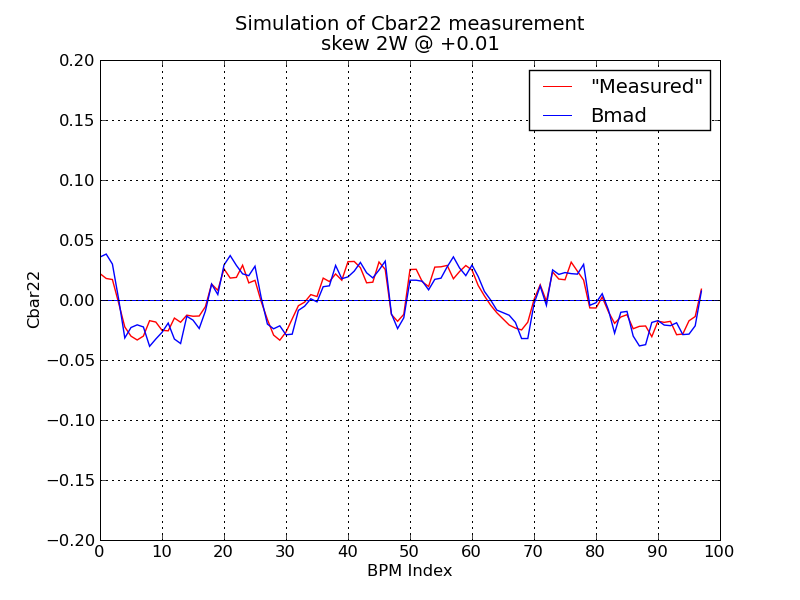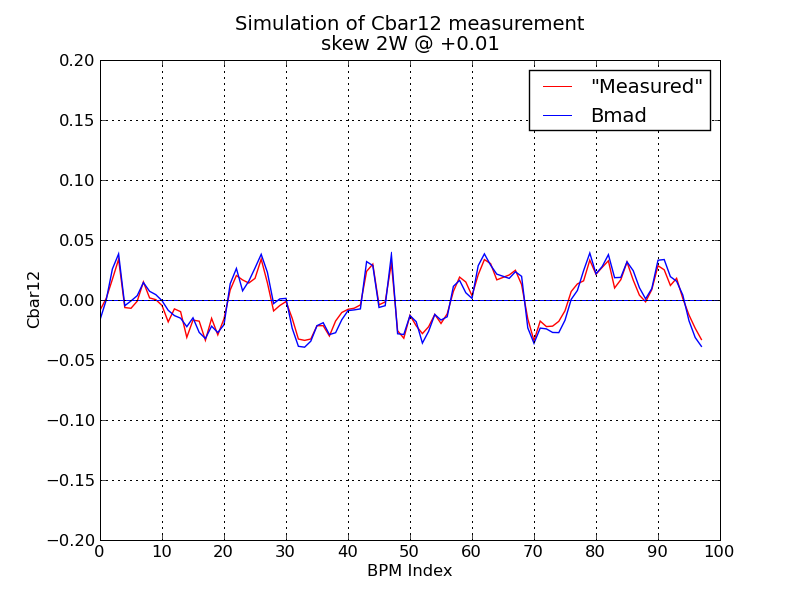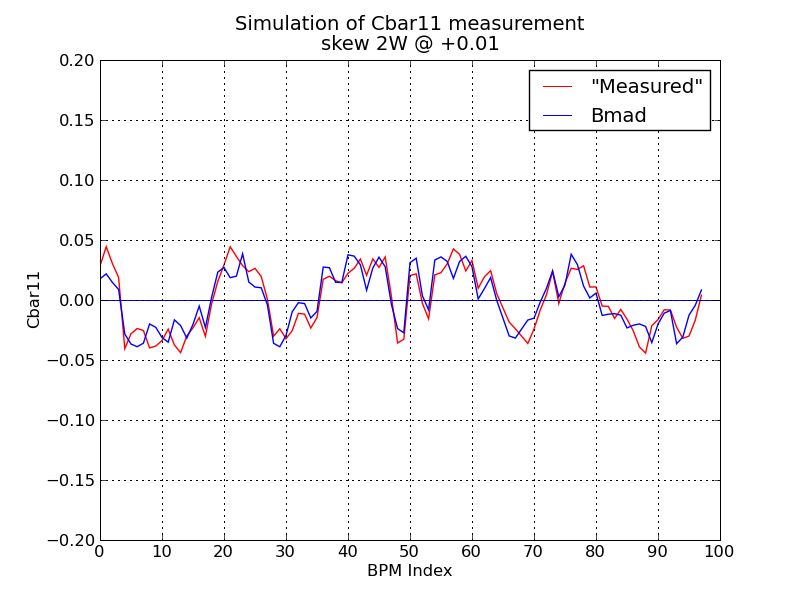


Continue working on Cbar simulation from 9/16/09. DLR suggested a different method of finding the amplitudes for the different components. See the corrected document here.
With the new method of calculating amplitudes, repeat the scenario where sk_q02w = 0.01, (x0,y0) = (0.1,0.1)mm, and n_turns = 1000
Plot the difference between the "measured" and Bmad model Cbar values:
These RMS values are much more reasonable than those from yesterday. Turning off all sextupoles doesn't reduce RMS further. Increasing n_turns to 10,000 actually slightly increases RMS difference from Bmad model Cbar values.
Problems on 9/16/09 with resolution have been resolved. Now we can study the effects of resolution, gain errors, and tilts on the quality of Cbar data. For now, focus on resolution and gain errors. For an ideal lattice (no tilts or coupling) find RMS cbar12 for various combinations of resolution and RMS gain errors:
Recall that we normally correct coupling to less than 1%. Repeat for a lattice with sk_q02w @ 0.01, and look at RMS ('measured' - model) cbar12:
The quality of our data plummets as soon as gain errors are introduced, when real coupling is present. There seems to be a much stronger dependence on the magnitude of gain error than the resolution. It's difficult to conclude much from these plots, however, due to the individual variation in random seeds used for each combination of gain error and resolution. Set up a job to run for 100 seeds at each combination of errors, and average those results.